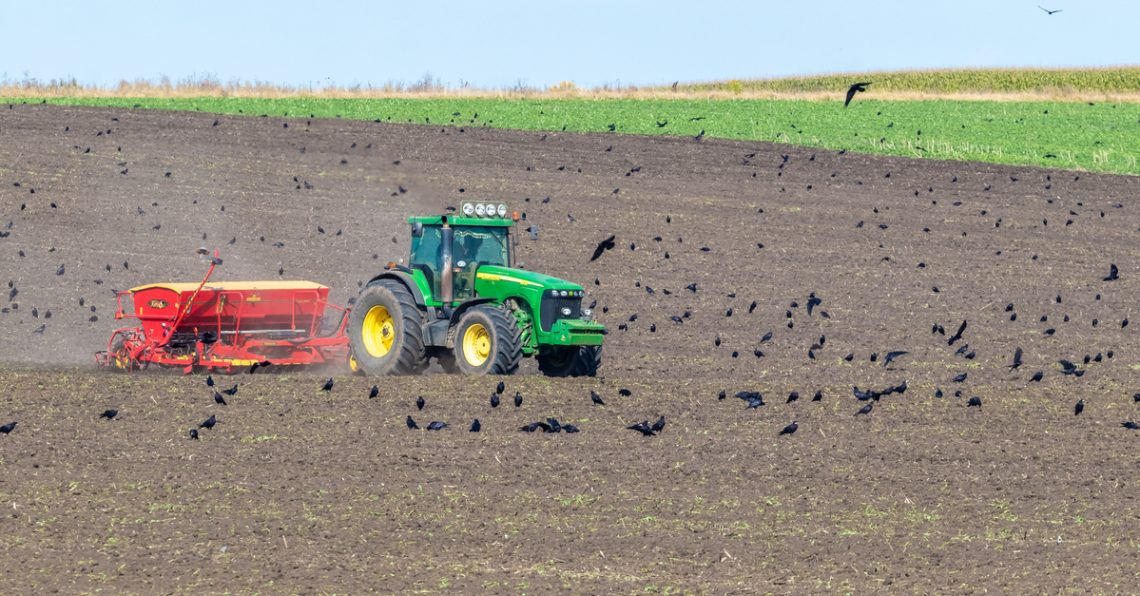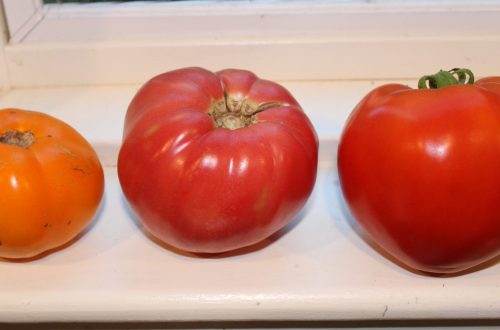
It’s Spring, and Planting Season for Our Wheat
WARNING: This blog contains gluten. We’re on the cusp of spring growing season. The snow has melted, and the frozen ground below is thawing. It’s the time of year when the farmers I knew as a youth were itching to get into the fields to prepare the soil for planting. And they were making last-minute decisions on how much of each crop to plant to maximize the return.
This past week, my friend Kristen delivered to us a homemade loaf of pampushka, a Ukrainian savory yeast bread that’s warmed and then seasoned with a butter-fueled garlic dill sauce. Think Ukrainian garlic bread. Stay with me. The two ideas are related. Though pampushky are often served in Ukraine as a side dish to red borscht or yushka (a meat and vegetable soup), we used ours as a garlicky side for pasta and meat sauce. And my family wolfed that pampushka down. I relate this story because Ukraine is the breadbasket of Europe. It is there that breadmaking is an art form, with the resulting output revealing a range of shapes, textures, and flavors.
Ukrainian tradition expects that guests at a home are greeted with a platter of bread and salt as an expression of hospitality. At a Ukrainian wedding, for example, the parents of the newlyweds present a gift of a braided ring-shaped bread called kolach that symbolizes prosperity and good luck. Paska, a round bubble-bread often decorated with a cross, is part of the Easter celebration.
From Ukraine to Kansas
And while Ukraine may be far away, the next time you bite into a great slice of bread, you should thank Ukrainian farmers. It was their wheat that transformed Kansas into our own breadbasket. Our own butter-sopping, high-rising sandwich loaves would not exist without the wheats that Ukrainian immigrants brought to the Midwest in the late 1800s. Those wheats had superior gluten that bagels, hoagies, and sandwich loaves require. The wheat itself has its roots in the Crimea, which was once under Turkish control – thus the variety was named Turkey wheat. It was these varieties that were brought to Kansas, the top wheat-growing state, by immigrants who adapted it to the area by cross-breeding those Ukrainian wheat kernels with other local wheats to fight crop diseases.
While wheat was first grown in Kansas in 1839, crop yields were low; the spring wheat didn’t grow well because of the hot, dry summers. Later, when Mennonites introduced the Turkey Red winter wheat in the 1870s, the new crops could withstand the Kansas winter and take advantage of the moisture that arrives in the winter and early spring. Early summer harvests of the new variety caught on, and Kansas became the Wheat State. According to the Kansas Wheat Commission, 36 billion loaves of bread could be baked from the wheat grown there each year.
Considering global markets, we might need all that wheat. This past week, the European Union accused Russia of targeting Ukrainian agriculture to spur a food shortage and cause a famine. Ukrainian officials say that farmers there are short of fertilizer as well as herbicides and pesticides. And even if they had enough of those materials, they can’t get enough fuel to power their equipment. Their estimate is that planted acres could fall by half this spring. Even if the Russians stopped now, the damage to the country’s infrastructure – roads and bridges – means Ukrainian farmers won’t be able to get the fuel, seed, and fertilizer they need.
To put it in a U.S. geographical perspective, Ukraine comprises a land mass so large that it compares to a stretch from the East Coast to slightly west of Chicago, and from the Canadian border to the southern border of West Virginia. Its agricultural land covers 70 percent of that area, with a growing season that matches the U.S. Interstate l-80 corridor states.
The spring harvest
The Ukrainian winter wheat crop looks good because about half of the fertilizer was in place before the hostilities began. But the question remains whether Ukrainian farmers will be able to harvest that crop, much less plant other crops this spring. That news doesn’t bode well for the country that is the world’s second largest shipper of grain. While Ukraine’s agricultural producers say their farmers are emphasizing spring crops — buckwheat, peas and other foods — to ensure that the country is provided with food, the outlook is not favorable. AgWeb reported last week that while farmers there remain as resilient as possible, there’s not a large incentive to get into the field, considering the challenges they face.
So the next time you reach for the bread for your sandwich or bite into a bagel, say a thank you to the wheat growers back in Ukraine that made that loaf possible.
To comment, please click on “Read in Browser” or on the headline to view the blog on the website. You can log in and comment at the end of the blog to share your thoughts and start a discussion.
If you’d like to share the blog, click on the Facebook icon or one of the others. Thanks!





One Comment
Charles Cook Kennedy
Lynn:
Thank you for the history lesson. Never knew that. Greetings from So. France.
Chuck Kennedy